
Transcription
Kwanzaa (First Fruit of the Harvest)
Kwanzaa is a celebration of family, community, culture and cooking.
Things needed to celebrate Kwanzaa:
1. Mazao: Fruits and vegetables, which stands for the product of unified effort.
2. Mkeka: A straw place mat, which represents the reverence for tradition.
3. Vibunzi: An ear of corn for each child in the family.
4. Zawadi: Simple gifts, preferably related to education or to things Afrikan or Afrikan-influenced.
5. Kikombe Cha Umoja: A communal cup for the libation (I like to look at this as a kind of homage to past, present and future black Americans).
6. Kinara: A seven-branched candle-holder, which symbolizes the continent and peoples of Afrika.
7. Mishumaa Saba: The seven candles, each one symbolizing one of the Nguzo Saba, or seven principles, that black Americans should live by on a daily basis and which are reinforced during Kwanzaa.
On each day of Kwanzaa, a family member lights a candle, then discusses one of the seven principles, which are called the Nguzo Saba.
1. Umoja (unity): to strive for and maintain unity in the family, community, nation, and race.
2. Kujichagulia (self-determination): to define ourselves, name ourselves, create for ourselves, and speak for ourselves instead of being defined, named, created for, and spoken for by others.
3. Ujima (collective work and responsibility): to build and maintain our community together, and to make our sisters' and brothers' problems our problems and to solve them together.
4. Ujamaa (cooperative economics): to build and maintain our own stores, shops, and other businesses and to profit from them together.
5. Nia (purpose): to make our collective vocation the building and developing of our community in order to restore our people to their traditional greatness.
6. Kuumba (creativity): to do always as much as we can, in whatever way we can, in order to leave our community more beautiful and beneficial than we inherited it.
7. Imani (faith): to believe with all our hearts in our people, our parents, our teachers, our leaders, and in the righteousness and victory of our struggle.
The next-to-last day of the holiday, Dec. 31 is marked by the Kwanzaa Karamu, or lavish feast along with a cultural expression of dance music, readings and remembrances.
1. Kukaribisha (welcoming): introductory remarks and recognition of distinguished guests and elders. Cultural expression through song, dance, music, unity circles etc.
2. Kukumbuka (remembering): reflections of a man, a woman, and a child cultural expression.
3. Kuchunguza Tena Na Kutoa Ahadi Tena (reassessment and recommitment): introduction of distinguished guest lecturer, and short talk.
4. Kushangilia (rejoicing)
Tamshi La Tambiko (libation statement)
Kikombe Cha Umoja (unity cup)
Kutoa Majina (calling names of family ancestors and black heroes)
Ngomac (drums)
Karamu (feast): cultural expression
5. Tamshi la tutaonana (farewell statement)
Write me directly at:
Marcus T. Rogers #377571
Stanley Correctional Institution
100 Corrections Drive
Stanley, WI 54768-6500
*** If you're interested in sending anything for the holiday/Kwanzaa season, please refer to my "Thing I need in a medium security prison" post. Thanks for all your kindness and support. xxx
-Marcus-
[scanned details of the prison's incoming mail rules]
Other posts by this author
|
2013 nov 26

|
2013 nov 25
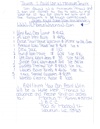
|
2013 nov 23
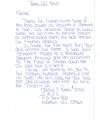
|
2013 nov 22

|
2013 nov 21
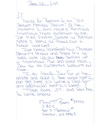
|
2013 nov 20

|
More... |
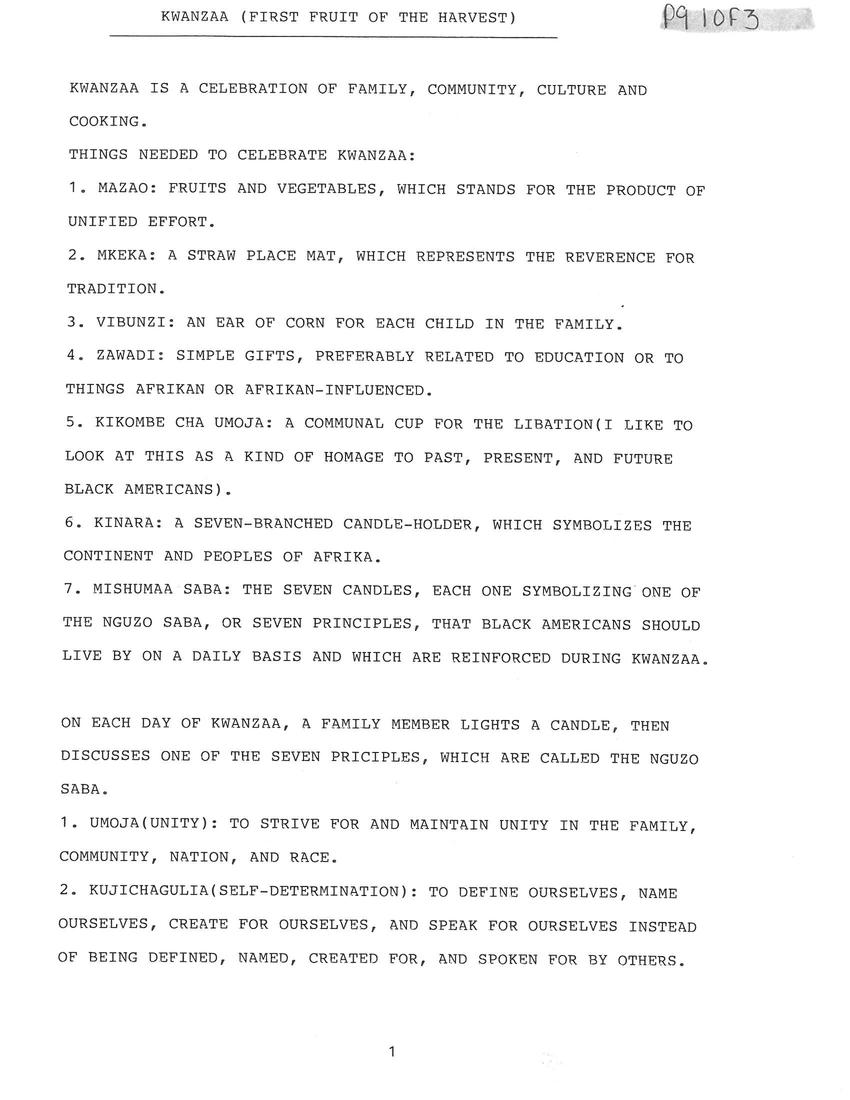
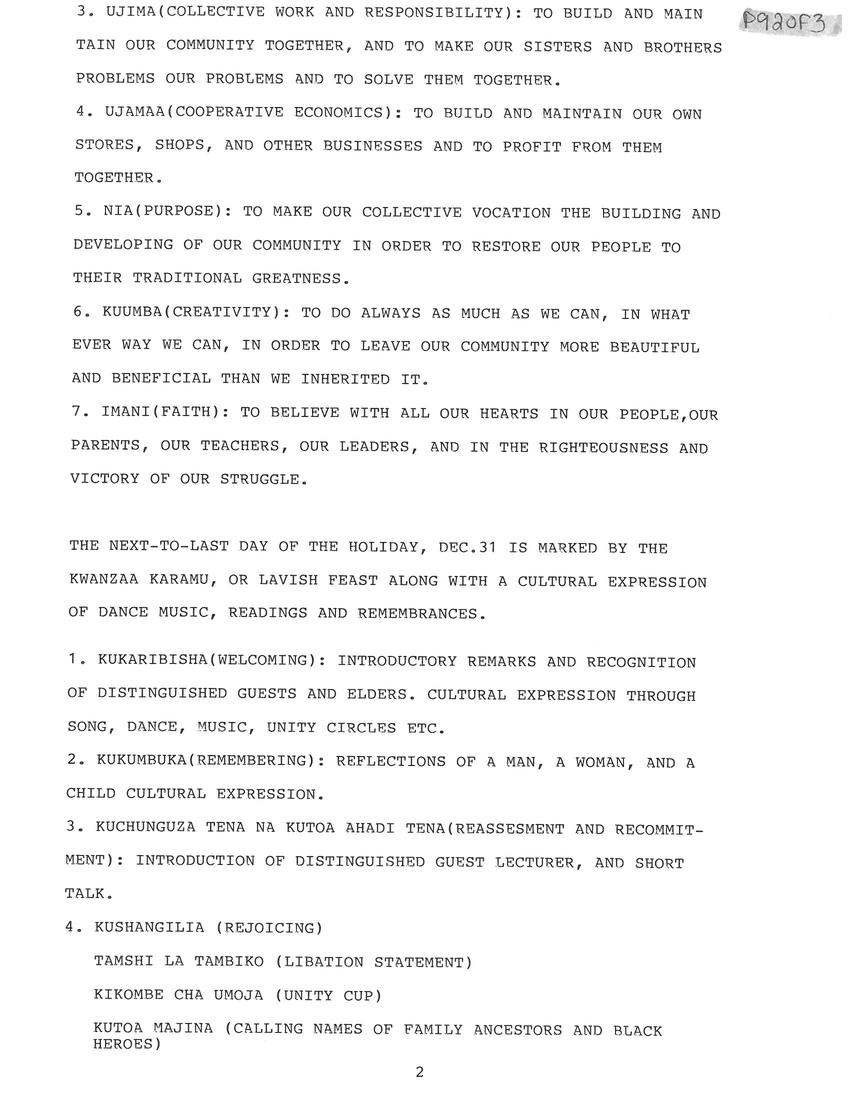
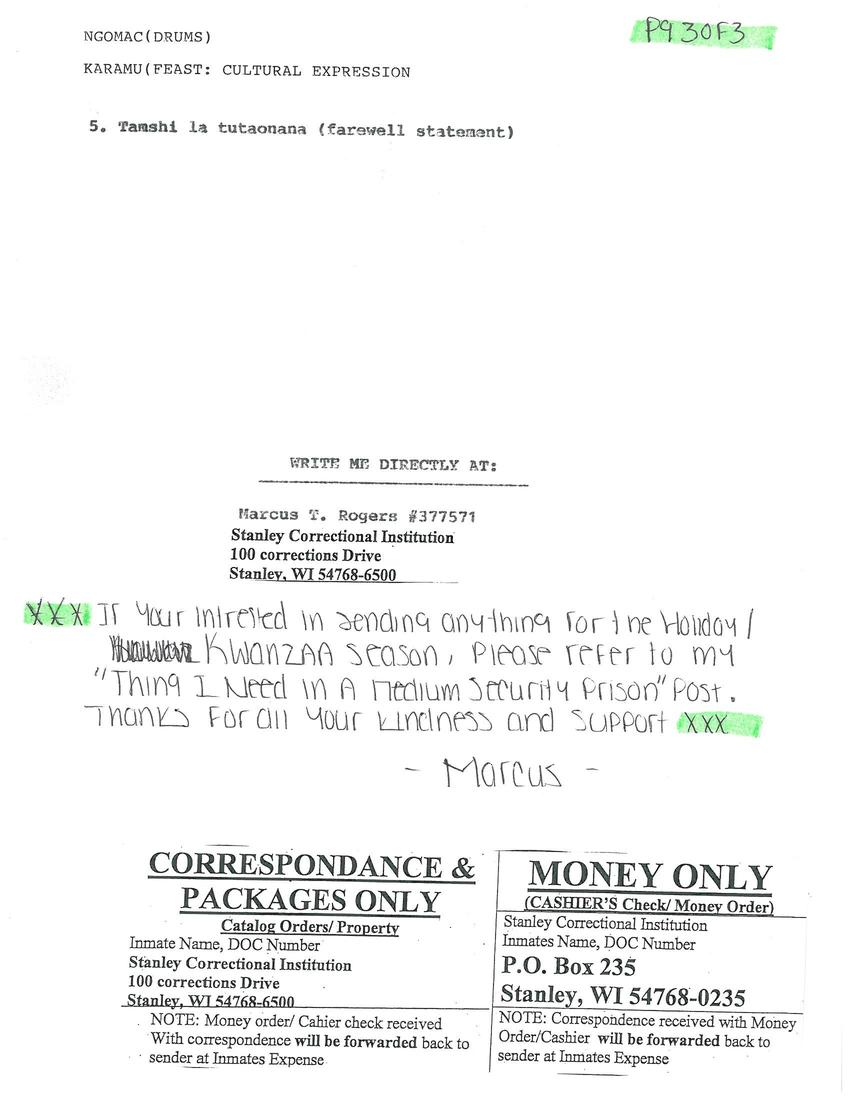

Replies